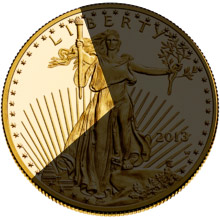Alongside capital gain, smart diversification of investments and lowering of risk should always be in an investor’s mind.
 Bullion.Directory’s How-To Series – 21 July, 2020
Bullion.Directory’s How-To Series – 21 July, 2020
By Alison Macdonald
Commercial Editor at Bullion.Directory
When the majority of the market is down, or in times of geopolitical instability, smart investors look for those areas of the market and asset classes that perform better: the so-called safe havens.
 Of these safe-haven investments, gold is considered to be among the best by investors.
Of these safe-haven investments, gold is considered to be among the best by investors.
That’s why the portfolios of most investors contain gold – from 5 to 25% – and during times of crisis this can be even higher.
There are many ways to invest in gold – and there are many bullion companies to work with.
We have over 1500 listed in Bullion.Directory alone and for first-time US investors we will typically suggest you can buy and trade gold with Gainesville Coins as companies like Gainseville cover both the physical bullion and the numismatics markets well, provide great levels of choice and offer market-leading help and advice.
Gold comes in many forms – alongside bullion there are other gold products that you can use to achieve various investment objectives.
When planning to invest in gold, you should consider the nature of professional advice you’ll require, the form of investment that’s appropriate to your circumstances, and the different options available in the market.
Here’s a closer look at different routes one can take to start investing in gold:
1. Buying Gold Bullion
At Bullion.Directory this is what we’re all about. The purchasing of gold in coins or bars is one of the more satisfying ways to own gold – being able to touch the gold coins or bars, feeling their weightiness all while admiring their sparkle and sheen brings a kind of emotional satisfaction to the owner unavailable in any other investment.
 This love for physically handling and in-person ownership of precious metals has created a generation of passionate “gold-bugs” or “stackers” who buy metals for far more than just their use as a market hedge or insurance. Stackers can also go from being investors to collectors and will often start to buy for more than the simple intrinsic value of the metal.
This love for physically handling and in-person ownership of precious metals has created a generation of passionate “gold-bugs” or “stackers” who buy metals for far more than just their use as a market hedge or insurance. Stackers can also go from being investors to collectors and will often start to buy for more than the simple intrinsic value of the metal.
They’ll go from building a weight-based investment to buying complete sets of bars from individual mints, unusual or old bars, collectable coins and hand-cast art bars – and this site of the hobby has really taken off with the advent of social media where collectors will show their “stacks” or film unboxing.
However, if you own more than a few thousand dollars-worth, ownership starts to come with serious drawbacks as well. This will not tend to apply to the larger-scale investor who will have opted for commercial vaulting straight from the get-go, but for the smaller retail investor it soon becomes a problem: The need to insure and safeguard the physical gold is probably one of the largest drawbacks of buying gold bullion and over a certain value home-storage becomes just too high risk for many.
TL-rated bullion safes for home use are large and expensive costing in some cases $5k, $7.5k, even $10k and upwards – but they do allow for a larger volume of secure home-storage gold.
For most investors however, secure bullion depositories are a much more practical answer. Yes the gold is not in your hands, which is never going to win popularity prizes with gold-bugs – but it’s safe and most importantly fully insured.
 Storage can be allocated or unallocated.
Storage can be allocated or unallocated.
Allocated accounts enable investors to purchase gold bars and coins from a bullion brokerage, with the bullion then being shipped or transferred to that person’s account in the bank or depository and held fully separated from other investor’s metals.
This option involves the ownership of specific gold, and, as an owner, you’ll have title to each of the bars or coins. You will get back the exact same bars and coins you put in.
Unallocated storage is where your bars and coins are grouped with other investor’s bars and coins. It is typically a good deal less expensive than allocated storage but you will not get back the exact bars and coins you added. As an example if you added 10oz of gold in a mix or coins and bars, you may get back 10oz of just bars, just coins or even a single 10oz bar – although usually you’ll receive broadly the same types of bullion you added.
Because the gold will be stored under a safekeeping or custody arrangement, the net worth, credit rating, security, and history of the allocated gold account provider or custodian is of vital importance, so due diligence is a must.
Note that when purchasing gold from physical gold dealers, owners wholly rely on the commodity’s price rising to make a profit. Physical bullion does not pay interest or generate income.
Gold will typically rise in value when stocks drop – and this is why it’s considered a good investment hedge. This was the case in the 2008 market crash and again the case in March 2020 when Covid-19becan to affect the markets.
In the crash of 07-08, gold rose 25.5% to an all-time high at the same time as the S&P 500 tanked 56.8%.
Over the past 45 years, gold has risen an average of 9% per year beating nearly all other classes of assets as a long-term investment.
2. Securing Gold Certificates
A company that owns gold can issue gold certificates as notes. It’s one way for investors to get direct gold exposure without physically owning it.
The notes aren’t associated with any specific gold since they’re usually for unallocated gold.
The only assurance is the guarantee from the company that it has enough to back the outstanding certificates.
Note that the costs are higher if you opt to secure allocated gold certificates instead.
3. Gold Exchange-Traded Funds (ETFs)
Investors don’t have to worry about having their gold stolen with a gold exchange-traded fund (ETF) since they won’t have to store physical gold or pay for storage.
 You can use any discount broker to buy and sell gold ETFs. The good news is that investors can grow their earnings tax-free by including ETFs in their Roth individual retirement account (IRA).
You can use any discount broker to buy and sell gold ETFs. The good news is that investors can grow their earnings tax-free by including ETFs in their Roth individual retirement account (IRA).
(Note: physical bullion can be held inside certain self-directed IRAs with the same tax advantages)
US-based investors can choose from a number of gold ETF options—some are traded on the American Stock Exchange, while others are on the New York Stock Exchange.
4. Purchasing Mining Gold Stocks
The stocks of a gold mining company may correlate with the price of gold, so investors can also invest in shares of these companies.
It’s essential to note, however, that the stock’s growth and return depend not just on the gold’s value, but also on the company’s expected future earnings.
5. Mutual Funds
By choosing a mutual fund, an investor who prefers mining stocks over direct exposure to gold can effectively own a portfolio of mining companies. Most major mutual funds houses offer open-end funds that invest in miners.
It’s a simple way of creating a diversified portfolio composed of mining stocks just with a single investment. Mutual funds also save the legwork of having to research the various mining options.
To get a better handle on a specific mutual fund’s investing approach (its cost structure, and whether it’s a passive index fund or one that’s actively managed), you’ll want to read its prospectus. Note that when buying shares of a mutual fund that’s actively managed, you’re trusting the fund managers fully, with the hope that they can invest on your behalf profitably. There can also be great variations between funds in terms of expense ratios.
6. Buying Gold Derivatives
Compared to other forms of gold investments, derivatives, such as options, forwards, and futures, require more knowledge of financial securities.
Derivatives may not be suitable for every investor, too. They trade on exchanges or over-the-counter (OTC). OTC derivatives are bilateral contracts, which include additional counterparty risk, but have more flexible structures.
On the other hand, derivatives traded on exchanges do settle in central clearing houses that match buyers and sellers.
Research Before Investing
The next step to take in determining how to invest in gold after deciding what form of gold or gold-related investments you want to purchase is to research on your different options. Due diligence is crucial if you don’t want to commit mistakes along the way. Bullion.Directory contains hundreds of trusted bullion dealers across the US with detailed user reviews and ratings.
You can also discuss the entire process with an expert, such as a financial advisor, if ever you need assistance.










 Material provided on the Bullion.Directory website is strictly for informational purposes only. The content is developed from sources believed to be providing accurate information. No information on this website is intended as investment, tax or legal advice and must not be relied upon as such. Please consult legal or tax professionals for specific information regarding your individual situation. Precious metals carry risk and investors requiring advice should always consult a properly qualified advisor. Bullion.Directory, it's staff or affiliates do not accept any liability for loss, damages, or loss of profit resulting from readers investment decisions.
Material provided on the Bullion.Directory website is strictly for informational purposes only. The content is developed from sources believed to be providing accurate information. No information on this website is intended as investment, tax or legal advice and must not be relied upon as such. Please consult legal or tax professionals for specific information regarding your individual situation. Precious metals carry risk and investors requiring advice should always consult a properly qualified advisor. Bullion.Directory, it's staff or affiliates do not accept any liability for loss, damages, or loss of profit resulting from readers investment decisions.

Leave a Reply